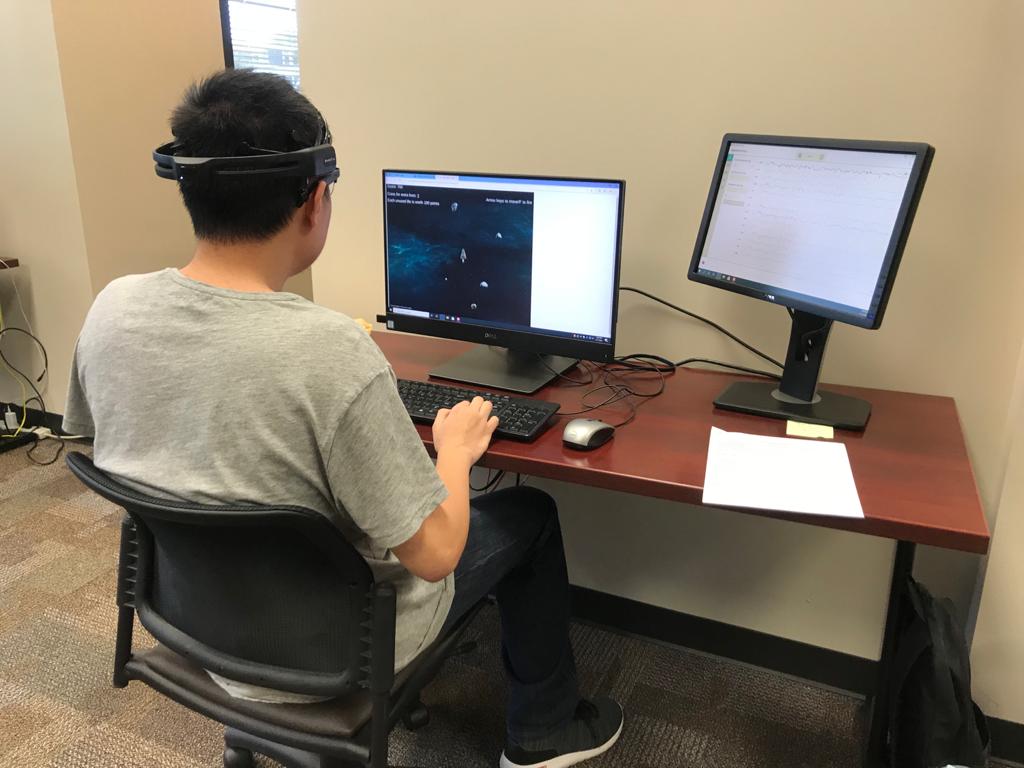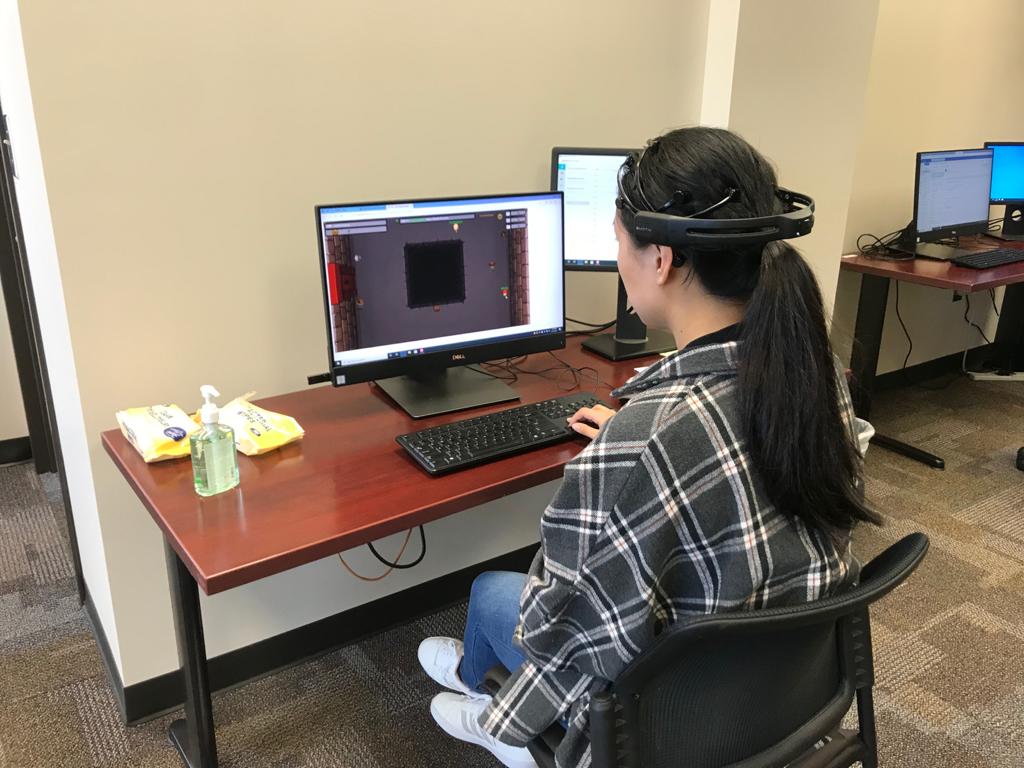Analysis of Emotional Parameter of Learning Cybersecurity with Games and Training using non-invasive IoT devices
The constant rise of cyber-attacks poses an increasing demand for more qualified people with cybersecurity knowledge. Games have emerged as a well-fitted technology to engage users in learning processes. In this paper, we analyze the emotional parameters of people while learning cybersecurity through computer games. The data are gathered using a non-invasive Brain-Computer Interface (BCI) to study the signals directly from the users’ brains. We analyze six performance metrics (engagement, focus, excitement, stress, relaxation, and interest) of 12 users while playing computer games to measure the effectiveness of the games to attract the attention of the participants. Results show participants were more engaged with parts of the games that are more interactive instead of those that present text to read and type.
Research Idea
We propose to use a Brain-Computer Interface (BCI) to directly read people’s brain signals and transferred them into a stream data database to measure their level of (i) engagement, (ii) focus, (iii) excitement, (iv) stress, (v) relaxation, and (vi) interest while playing cybersecurity games. The idea is to perform an effective analysis of teaching cybersecurity with games by extracting information from a wearable IoT device. We use Emovit Epoc+ Neuroheadset ~\cite{Emotiv1} to read and record brain signals. Emotiv is a bioinformatics company focused on developing varieties of electroencephalography (EEG) based BCIs products with the mission of empowering individuals to understand their brain and accelerate brain research globally.
We consider that in general and regardless of the game they are playing, subjects are very interested in the task of learning using games; in this case, learning cybersecurity. However, the interactivity of the game plays an important role in engaging the participants. We noted that participants were more engaged with parts of the games that teach “Access Control” than others that teach “Buffer Overflow” mainly due to the interactivity of the game. The “Access Control” game presents an interactive avatar that interacts with multiple animations in order to learn. Instead, the “Buffer Overflow” game is a mix of reading, questions, and small portions of interactive games. Participants were more engaged in the interactive sections. We also noticed that the initial part of the game is fundamental to hit the excitement of the participants. Good introductions to the game generate more excitement than just text and questions. We noted that the level of stress and relaxation is the same across both games regardless of their interactivity. Finally, we noted that maintain a high level of focus in the game is a difficult task, but parts of the game that require the subject to perform an action generate more focus than long texts to read.

.
Publications
- Emotional Analysis of Learning Cybersecurity with Games. Valero, Maria; Li, Lei; Shahriar, Hossain; Sobhan, Shahriar; Handlin, Michael; Jinghua, Zhang. IEEE International Conference on Intelligence and Security Informatics (ISI), 2021
- An Investigation on Non-Invasive Brain-Computer Interfaces: Emotiv Epoc+ Neuroheadset and Its Effectiveness. Hossain, Jobair; Valero, Maria; Shahriar, Hossain. IEEE Computers, Software, and Applications Conference (COMPSAC 2021), 2021.


